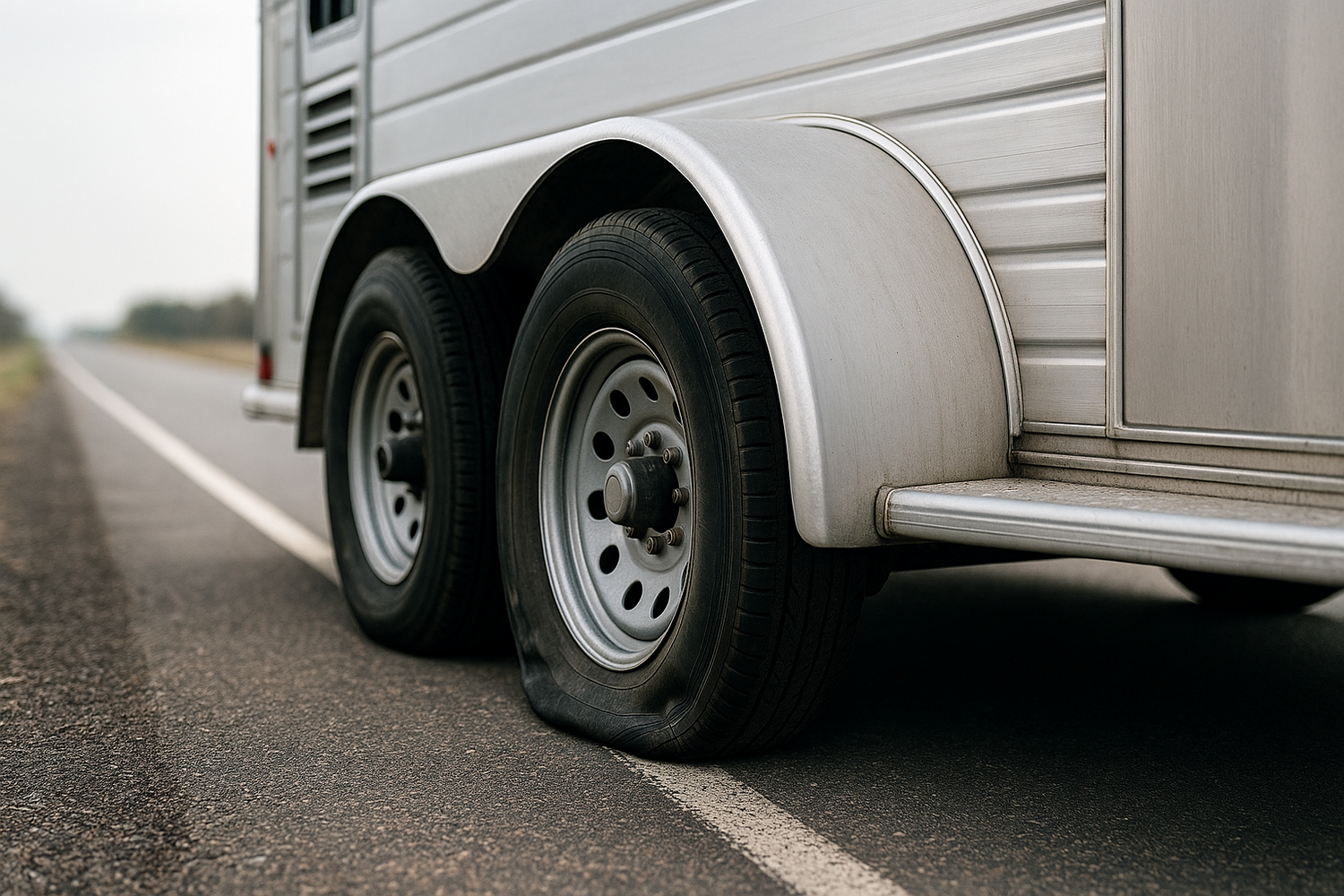Maintaining the right tire pressure is crucial for the safety and performance of light load vehicles. A tire pressure monitoring set for light load vehicles plays a vital role in ensuring that tires are properly inflated, which directly impacts vehicle handling, fuel efficiency, and overall safety.
When tires are under-inflated, they experience increased wear and tear, which can lead to catastrophic failures such as blowouts. Conversely, over-inflated tires can result in reduced traction and a harsher ride. By utilizing a tire pressure monitoring system, operators can receive real-time data on tire pressure, allowing them to make timely adjustments and avoid potential hazards.
Key benefits of implementing a tire pressure monitoring set include:
- Enhanced Safety: Real-time alerts can prevent accidents caused by tire failures.
- Improved Fuel Efficiency: Properly inflated tires contribute to better gas mileage.
- Extended Tire Life: Monitoring helps in maintaining optimal tire conditions, reducing the need for premature replacements.
Furthermore, integrating a tire pressure monitoring system into your trailer enhances peace of mind while towing. With the ability to monitor tire conditions continuously, drivers can confidently focus on the road ahead, knowing they are equipped with the necessary information to make informed decisions. Tow with peace of mind, knowing that trailerwatchdog is standing guard. For more information, visit trailerwatchdog.com.
Benefits of Tire Pressure Monitoring for Light Load Vehicles

Implementing a tire pressure monitoring system in light load vehicles offers a multitude of benefits that can significantly enhance both operational efficiency and safety. With constant monitoring of tire conditions, drivers and fleet operators can experience the following advantages:
- Proactive Maintenance: Early detection of tire pressure issues allows for timely interventions, reducing the likelihood of sudden tire failures that can lead to costly repairs and downtime.
- Cost Savings: Properly inflated tires can improve fuel efficiency by up to 3%, translating into substantial savings over time. Additionally, maintaining optimal tire pressure extends the lifespan of tires, further reducing replacement costs.
- Improved Handling: Correct tire pressure ensures better traction and control, which is especially important for light load vehicles that may carry varying weights. This improved handling enhances overall driving experience and safety.
- Environmental Impact: Increased fuel efficiency not only saves money but also contributes to a lower carbon footprint. By maintaining tire pressure, operators can help reduce greenhouse gas emissions.
- Increased Safety: With a tire pressure monitoring system, drivers receive real-time alerts about any discrepancies in tire pressure, allowing them to address issues before they escalate into dangerous situations.
In summary, the benefits of tire pressure monitoring for light load vehicles are clear. From cost savings to enhanced safety, these systems provide critical insights that empower drivers and fleet managers to operate more effectively.
How Tire Pressure Impacts Vehicle Performance

The performance of any vehicle, including light load vehicles, is significantly influenced by tire pressure. Understanding how tire pressure affects various aspects of vehicle operation can lead to safer and more efficient driving experiences. Here are several key areas where tire pressure plays a critical role:
- Fuel Efficiency: Tires that are under-inflated create more rolling resistance, requiring the engine to work harder and consume more fuel. Conversely, properly inflated tires can optimize fuel economy, allowing vehicles to travel further on less fuel.
- Handling and Stability: Tire pressure directly affects the vehicle's handling characteristics. Under-inflated tires can lead to sluggish steering response, while over-inflated tires may result in a harsh ride and reduced grip. Maintaining the ideal pressure ensures that the vehicle handles predictably, enhancing driver confidence.
- Tire Wear: Incorrect tire pressure can lead to uneven tire wear. Under-inflated tires wear out faster on the edges, while over-inflated tires wear more quickly down the center. Regular monitoring helps ensure even wear, extending tire life.
- Braking Performance: Adequate tire pressure contributes to optimal contact with the road surface, which is crucial for effective braking. Properly inflated tires improve stopping distances, which can be critical in emergency situations.
- Comfort: Tire pressure also affects ride comfort. Properly inflated tires absorb shocks and provide a smoother ride, while incorrect pressure can lead to a bumpy and uncomfortable driving experience.
In conclusion, maintaining the correct tire pressure is essential for maximizing vehicle performance. It not only enhances safety and efficiency but also contributes to a more enjoyable driving experience.
Features to Look for in a Tire Pressure Monitoring Set

When considering a tire pressure monitoring set for light load vehicles, it's essential to identify features that enhance safety, convenience, and performance. Here are some critical features to look for:
- Real-Time Monitoring: A good tire pressure monitoring system should provide real-time data on tire pressure levels. This feature allows drivers to address issues promptly before they lead to tire failure or safety hazards.
- Temperature Monitoring: Tire temperature can significantly impact performance and safety. Look for systems that not only monitor pressure but also provide temperature readings, helping to prevent overheating and potential blowouts.
- Alerts and Notifications: The system should come equipped with audible and visual alerts to notify the driver of any pressure fluctuations. This proactive approach ensures that you can respond quickly to any issues.
- Ease of Installation: Choose a tire pressure monitoring set that is easy to install and compatible with your vehicle. Systems that come with clear instructions and user-friendly interfaces are ideal for hassle-free setup.
- Durability and Weather Resistance: Since tire monitoring systems are exposed to various environmental conditions, selecting a set that is durable and weather-resistant is crucial for long-term performance.
- Battery Life: Look for systems with long-lasting battery life or those that can be easily charged. Extended battery life ensures that the monitoring system remains operational without frequent interruptions.
By focusing on these key features, you can select a tire pressure monitoring set that optimally supports your light load vehicle, ensuring safer journeys and better performance.
Installation and Maintenance of Tire Pressure Monitoring Systems
The installation and maintenance of tire pressure monitoring systems are vital for ensuring they function effectively and provide accurate data. Here’s a comprehensive guide on how to approach both aspects:
Installation
Installing a tire pressure monitoring system (TPMS) can vary in complexity depending on the model. Here are general steps to follow:
- Read the Manual: Always start by thoroughly reading the manufacturer's instructions. This will guide you through the specific installation process for your chosen system.
- Gather Tools: Ensure you have the necessary tools on hand, such as tire pressure gauges, wrenches, and screwdrivers, to facilitate a smooth installation.
- Sensor Placement: If your system uses external sensors, they need to be securely attached to the valve stems of each tire. Ensure they are tight to prevent air leaks.
- Calibration: After installation, calibrate the system according to the instructions. This step is crucial for accurate readings.
- Test the System: Once installed, inflate the tires to the recommended pressure and check if the TPMS accurately reflects the tire pressure.
Maintenance
To maintain optimal performance of your TPMS, consider the following:
- Regular Checks: Periodically check the tire pressure manually to ensure the TPMS readings are accurate. This helps identify any discrepancies.
- Battery Replacement: Monitor the battery life of the sensors. Some systems might require battery changes every few years, so stay proactive about replacements.
- Visual Inspections: Regularly inspect the sensors and valve stems for signs of wear or damage. Replace any faulty components promptly.
- Software Updates: If your system offers software updates, make sure to install them to benefit from improved features and functionality.
By following these installation and maintenance tips, you can ensure that your tire pressure monitoring system operates efficiently, enhancing the safety and performance of your light load vehicle.
Choosing the Right Tire Pressure Monitoring Set for Your Needs

When it comes to choosing the right tire pressure monitoring set for your needs, several factors come into play to ensure you select a system that fits your specific requirements. Here are key considerations to guide your decision:
1. Vehicle Compatibility
Ensure that the TPMS you choose is compatible with your vehicle type. Some systems are designed specifically for light load vehicles, while others can accommodate heavier trailers. Always check the specifications before making a purchase.
2. Sensor Type
Tire pressure monitoring systems typically come with either internal or external sensors. Internal sensors are usually more accurate but can be more complex to install. External sensors are easier to install and replace but may be less reliable in extreme conditions.
3. Display Features
Look for a system with a clear and user-friendly display. Consider whether you prefer a digital display, which can provide real-time data on tire pressure and temperature, or a simpler analog version. Some advanced systems even offer smartphone connectivity for added convenience.
4. Alert System
Choose a TPMS that includes an alert system for low tire pressure or high temperature. This feature is crucial for preventing potential tire blowouts and ensuring your safety on the road.
5. Battery Life
Check the battery life of the sensors. A longer battery life means less frequent replacements, which can save you time and effort in the long run.
6. Budget
Lastly, consider your budget. TPMS prices can vary significantly based on features and capabilities. It's essential to find a balance between cost and functionality that meets your needs.
By carefully evaluating these factors, you can make an informed decision about which tire pressure monitoring set will best serve your light load vehicle. Tow with peace of mind, knowing that trailerwatchdog is standing guard.








